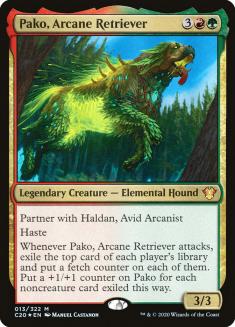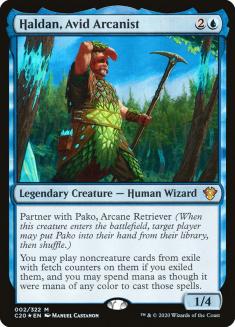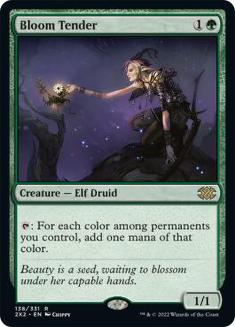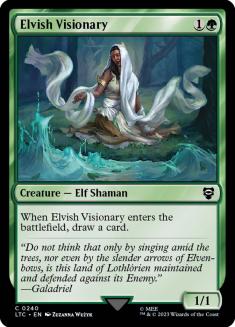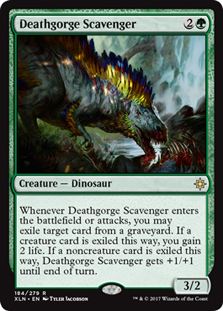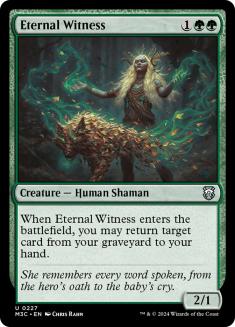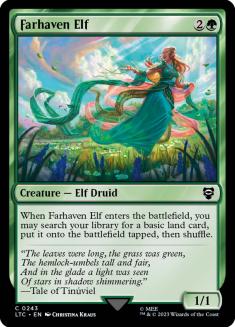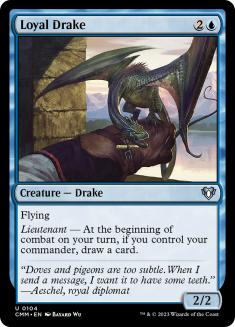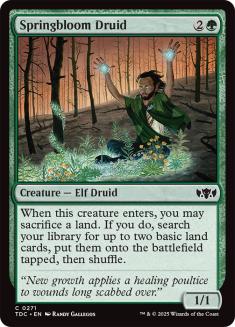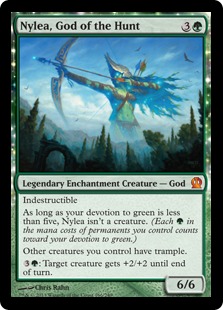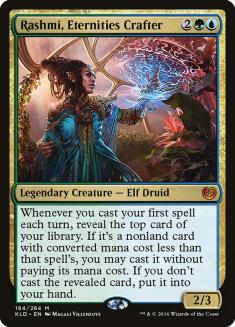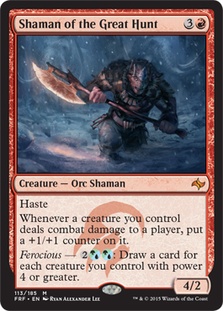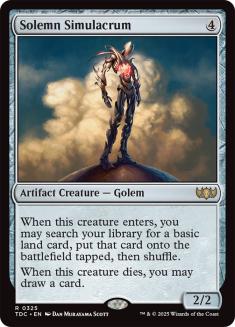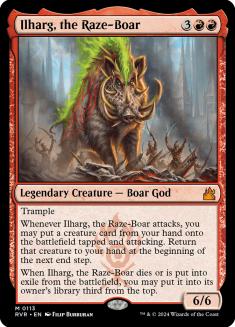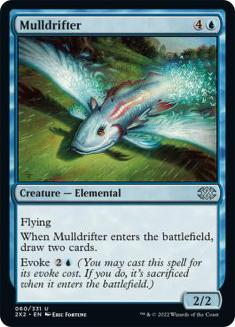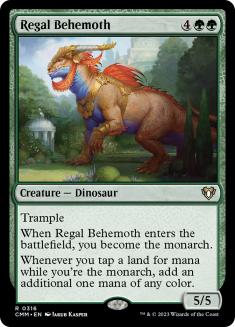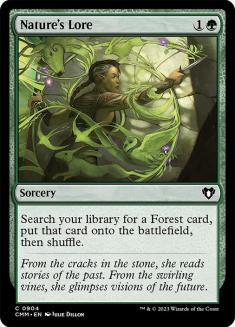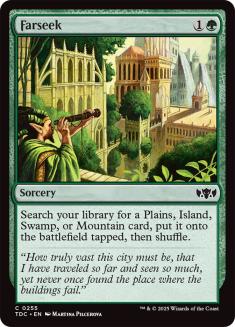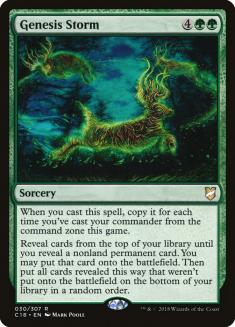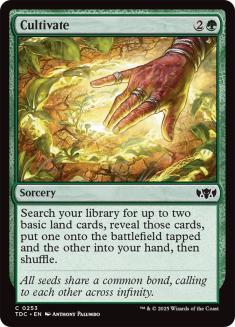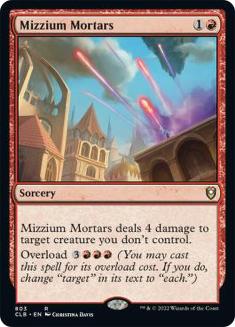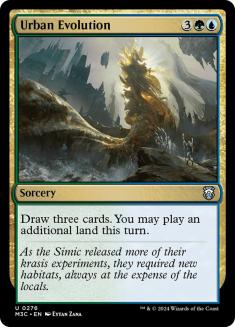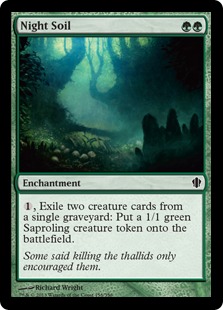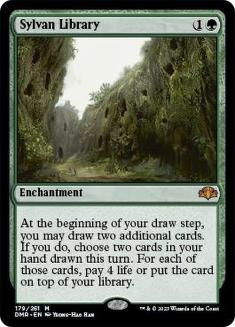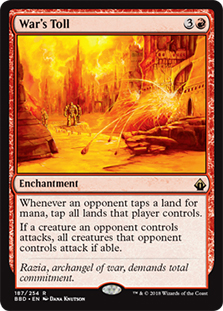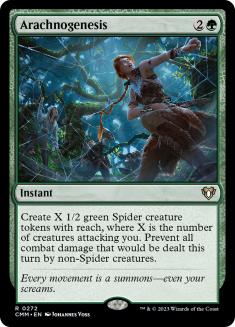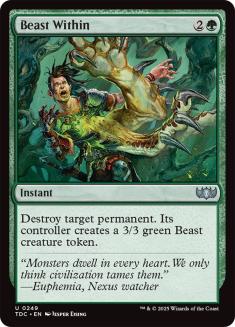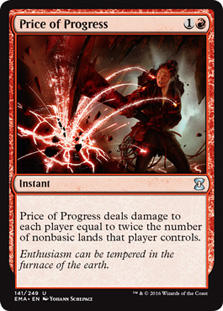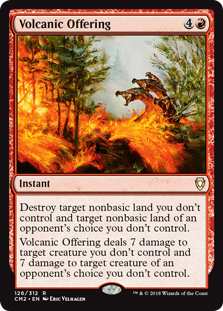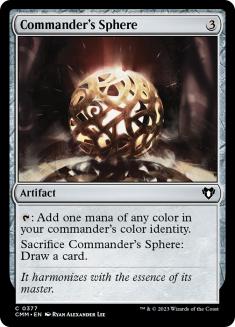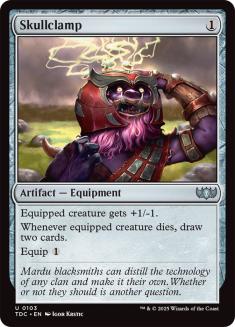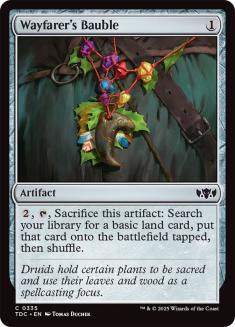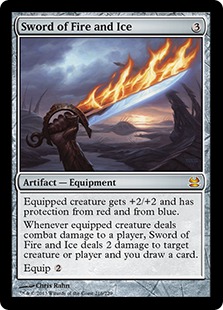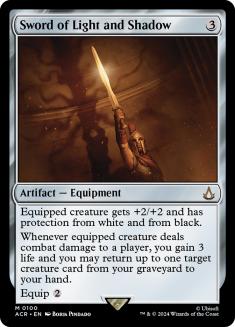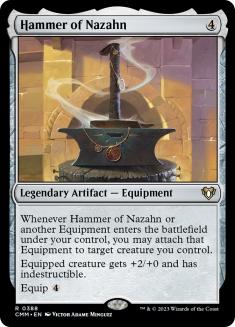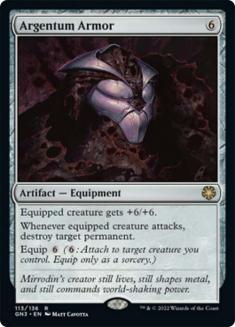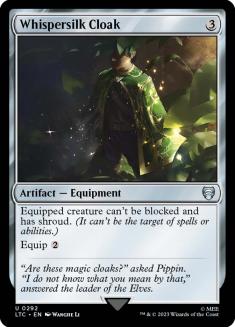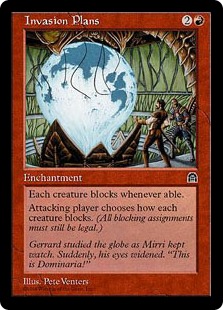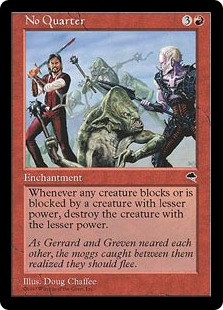When you have lots of decks (current count 54) and you update them with every new set, you necessarily end up taking out cards. It’s not that those cards are bad; it’s that you need to make room for the new ones.
Just building new decks isn’t enough. The question is what to do with those old cards. Herein lies one answer.
I’m inherently lazy. I have a well-organized collection, but I dislike putting cards back. Sorting and filing isn’t work you ever really want to do; you do it because you have to. Let’s face it — it’s all pretty mind-numbing. What ends up happening is that I pile them up until the mound is big enough that I can no longer ignore it. I tried to solve the problem by creating small “staples” boxes for each of the five colors, multicolor, artifacts, and lands — but who am I kidding? They’re just an alternate part of the filing system at this point. Sure, I look in them whenever I want to build a new deck, but for the most part it’s still just an extra layer to the system.
I’ve reached one of those crisis points. My (eight-player) table is choked with cards. I might not need the gaming table anytime soon due to social distancing, but it’s a mess, and I like at least a semblance of order in the game room. I’m probably also one of those people who end up doing more work to avoid the thing that was too much work in the first place. I suspect that’s just what I’m doing here — but hey, new deck. Gotta look for the silver linings.
I knew that I wanted to build Pako, Arcane Retriever and Haldan, Avid Arcanist. I flipped through a bunch of the unsorted piles (yes, implying that there are actually sorted piles in that mess) for some cards that I wanted to play. I didn’t have a coherent strategy in mind, just cards I wanted to run. A few in the pile popped up as “you’ll probably want these” as well. I pulled out 31 cards. I decided that they’d be my starting point, and then I’d find other cards (hopefully from one of those other piles) to fill out the deck with some kind of coherent strategy. Here’s the starting point:
Creatures
Looking at the curve, that’s…
Two Mana
Three Mana
Four Mana
Five Mana
Six Mana
Sorceries
Enchantments
Instants
Artifacts
The only thing I see at this point is a slight Elf theme. Of the fifteen creatures, six are Elves. That’s probably not enough to go on, and Elf tribal is pretty much overdone at this point. Certainly, we could lean into the commanders’ abilities, which is why I grabbed the Riftsweeper when I saw it. Let’s explore that a little.
There’s already the value of exiling stuff belonging to your opponents. Mitigating some of the disadvantage of exiling your own things when Pako attacks leads us to cards like Eternal Scourge; Misthollow Griffin; and Squee, the Immortal. They’re not particularly exciting unless you want to go infinite with Food Chain; otherwise there’s probably little value to be had with them (and that’s not a direction I want to head). There’s the whole series of Phyrexian Processors, but they’re also not all that compelling.
Having some high-impact noncreature spells is probably the way to go. As I was thinking about that, making a Voltron Pako occurred to me as a fair amount of fun. I went back to the piles and found only two Equipment, but they were spicy: Sword of Fire and Ice and Sword of Light and Shadow. Poking around, I also found Coiling Oracle, Yavimaya Elder, Mystic Snake, and Horizon Chimera, so I added them to my growing pile.
With choices from the pile on the table exhausted, it was then time to start looking for the rest of what I wanted to do with the deck. I definitely wanted to continue the Voltron theme and also looked for some top-of-the-library manipulation, both mine and opponents’. There’s not a great deal of playable stuff for the latter, but it brings back a reason to play Hinder. And probably Primal Command. There’s old favorite Nevermaker, which I’m pretty sure I took out of a deck but I didn’t see when I first picked through the pile. I went back, found it, and while I did, also picked out Fact or Fiction; Radiate; Godo, Bandit Warlord; and Comet Storm. Then, I want to finish with some big-impact noncreature spells to cast off Haldan, which will of course be good when I just draw them normally as well.
The directions we can go from there are legion. It’s more about what we want to do than what we should. During the process it occurred to me that we can just do whatever we might normally do with a deck and simply get the extra bonus of bottling a card to cast off Haldan’s ability. I’m okay with people knowing that I have a Radiate or Comet Storm ready to go in case they want to do something silly. The question now becomes what silly things we want this deck to do. There are still plenty of slots left (about seventeen at this point).
We still haven’t filled out the Voltron rid for our doggo, so we can start with Hammer of Nazahn. We’re going big and splashy here, so Argentum Armor seems like a good call, especially since might not have to pay to equip it due to Hammer of Nazahn. Because we’ll be equipping our Dog, we’ll have to put Basilisk Collar on it. There’s also Avacyn’s Collar, but it doesn’t quite cut it quality-wise. Whispersilk Cloak, however, will do what we want — protect Pako and get us toward some of those commander damage kills.
Back to an earlier point, we’ll add a small amount of our own top-of-library manipulation in order to make sure that the thing of our own we’ll be exiling fits with our plan. Sensei’s Divining Top and Scroll Rack will let us rearrange and Future Sight provides effective card draw.
Adding a few other techy cards, like Cindervines and Samut, the Tested, we eventually come up with this list:
Creatures (21)
- 1 Solemn Simulacrum
- 1 Godo, Bandit Warlord
- 1 Eternal Witness
- 1 Mystic Snake
- 1 Yavimaya Elder
- 1 Coiling Oracle
- 1 Riftsweeper
- 1 Mulldrifter
- 1 Nevermaker
- 1 Farhaven Elf
- 1 Bloom Tender
- 1 Elvish Visionary
- 1 Nylea, God of the Hunt
- 1 Horizon Chimera
- 1 Shaman of the Great Hunt
- 1 Regal Behemoth
- 1 Rashmi, Eternities Crafter
- 1 Deathgorge Scavenger
- 1 Loyal Drake
- 1 Ilharg, the Raze-Boar
- 1 Springbloom Druid
Planeswalkers (1)
Lands (37)
Spells (39)
- 1 Hinder
- 1 Scroll Rack
- 1 Sylvan Library
- 1 Red Elemental Blast
- 1 Price of Progress
- 1 Future Sight
- 1 Sword of Light and Shadow
- 1 Sword of Fire and Ice
- 1 Skullclamp
- 1 Night Soil
- 1 Wayfarer's Bauble
- 1 Whispersilk Cloak
- 1 Insurrection
- 1 Nature's Lore
- 1 Fact or Fiction
- 1 Radiate
- 1 Farseek
- 1 War's Toll
- 1 Harmonize
- 1 Primal Command
- 1 Basilisk Collar
- 1 Comet Storm
- 1 Cultivate
- 1 Argentum Armor
- 1 Beast Within
- 1 Hunter's Insight
- 1 Mizzium Mortars
- 1 Cyclonic Rift
- 1 Urban Evolution
- 1 Commander's Sphere
- 1 Volcanic Offering
- 1 Arachnogenesis
- 1 Heroic Intervention
- 1 Hammer of Nazahn
- 1 Nexus of Fate
- 1 Genesis Storm
- 1 Cindervines
- 1 Narset's Reversal
- 1 Garruk's Uprising

The play pattern is relatively straightforward. Without an early ramp, Haldan is the first creature drop, followed up by Pako. Pako has haste, so you can battle with it right away, getting the trigger and exiling stuff in order to later cast. In the early going, you can hope for some ramp / battlefield development out of those noncreature spells, fueling your later exploits.
At a certain point, just sending an unprotected Pako into combat won’t work, since in the mid-game it’ll be outclassed by larger creatures (even with those counters). That’s when we’ll start equipping it up. Early Whispersilk Cloak is a strong answer, since there won’t then be awkward combats. Depending on the state of the battlefield, it’s the likeliest first choice to tutor up with Godo, Bandit Warlord, although you have to be careful. Because Whispersilk Cloak gives shroud, you’ll have to move it to another creature before putting additional Equipment on Pako.
From there the plan is to cast your opponents’ cool stuff. They’ll be exiled with fetch counters on them, so even if you need to recast Haldan, you’ll have them available to you. What’s best about this idea is that the variance in your games is even higher, because you never know what’ll come up from everyone else’s decks. You’ll find you’ll have card interactions that you hadn’t thought of because the cards come from decks in which they wouldn’t normally be able to be played together.
The relatively high density of instants and sorceries (23) comes from the fact that Pako will exile your own stuff, and you want to make it available to yourself. It’s another form of effective card draw; it’s not in your hand, but you can cast it. The cards are face up, so your opponents will see your interaction, but that’s not always the worst thing. If it’s one of the few counterspells, the delay you cause as they work and play around it will likely give you the time to punch in one of those commander damage kills.
My favorite one of those is Radiate; if someone wants to use a little bit of targeted removal, they’ll have to deal with the fact that their stuff is getting blown up as well. Add a timely Heroic Intervention, and we could have a big blowout play. Letting them see Arachnogenesis is similarly not all that bad. Knowing it’s there, any individual player won’t want to commit their own resources knowing the attack will get rebuffed and they’ll be subject to the crack-back. Of course, the table might conspire against us, but if that’s where we’ve gotten to, we’re probably in a pretty good situation.
I nearly went for the old-school combo of Invasion Plans and No Quarter but ended up cutting them for space. It’s still a combo worth looking into.
Invasion Plans requires creatures to attack each combat—not an unusual effect. What’s more important is that the attacking player chooses how each creature blocks. The attacker then gets to set up some pretty favorable situations, which we can then compound with No Quarter. The short version is that before damage ever gets dealt in combat, the smaller of the two creatures gets destroyed.
You can use Invasion Plans and No Quarter together as creature control, wiping out the creatures you want. What’s additionally cool about No Quarter is if your attacker has trample, the blocker isn’t around to eat up any of it. While either of these cards individually will yield some good results, together they’re quite saucy. The main reason I decided to leave them out is that the whole creature suite isn’t really set up to take advantage of them—but I’ll start looking for a deck into which the combo might fit.
The Pako and Haldan deck carries two “big spell” plans. The first is Narset’s Reversal, giving you an extra turn, maybe more later on. As you get into the mid-game of threatening commander damage kills, one extra turn (which is effectively an extra combat) can make all the difference. The additional combat angle was one that I had considered taking here, but then discarded due to running the theme in several other decks—such as The Threat of Yasova (which might be cool to play Pako and Haldan at the helm of, since there’s color identity overlap).
The second part of the big spell plan is Insurrection. Even if swiping everyone’s creatures for a turn isn’t enough, it also means no blockers for getting Pako across the finish line onto someone’s dome. There aren’t any sacrifice outlets to dump the creatures into after the Insurrection, so we’ll definitely have to think about appropriate timing; we won’t be able to just run it out there at first opportunity.
This is a low- to mid-power deck that, due to the way many of the cards were chosen, doesn’t have quite the tightly-wound core of other decks. It will do well in a relatively casual environment in which you’re not worried about anyone going off too early. If you’d want to step it up power-wise, the path would be a number of mana creatures to go with the ramp in order to power out both commanders a turn or two earlier and really get the engines running. For my purposes, in my “local group” comprised of the other RC members, the slower deck better suits our style and will likely lead to far more interesting games for us. Look for it on the RC stream sometime soon.
Visit my Decklist Database to see my Signature Decks, the Chromatic Project, and more!


